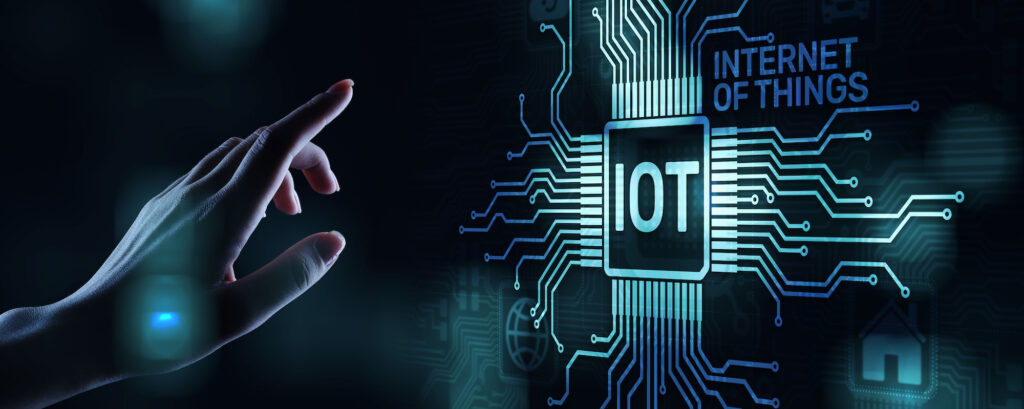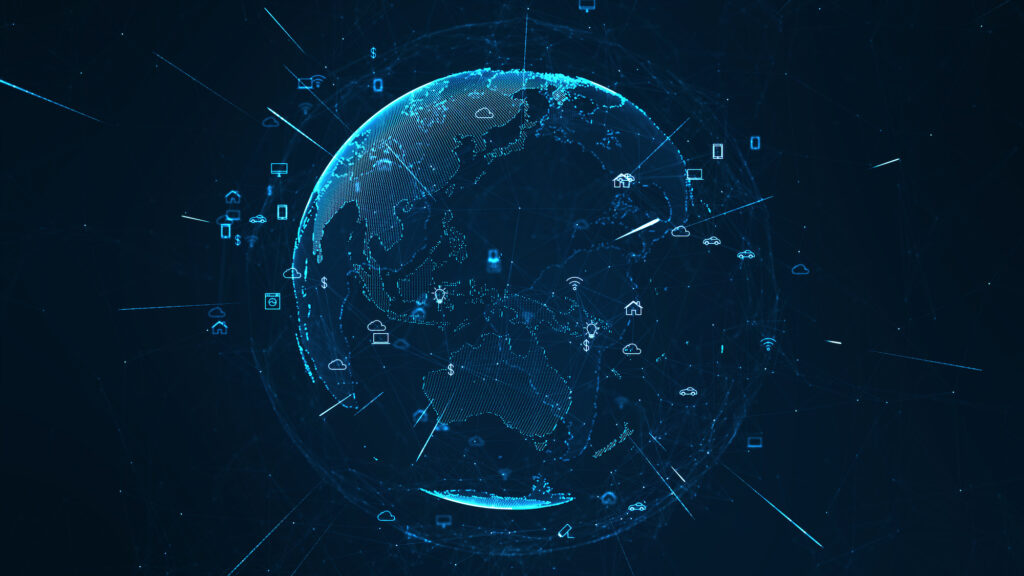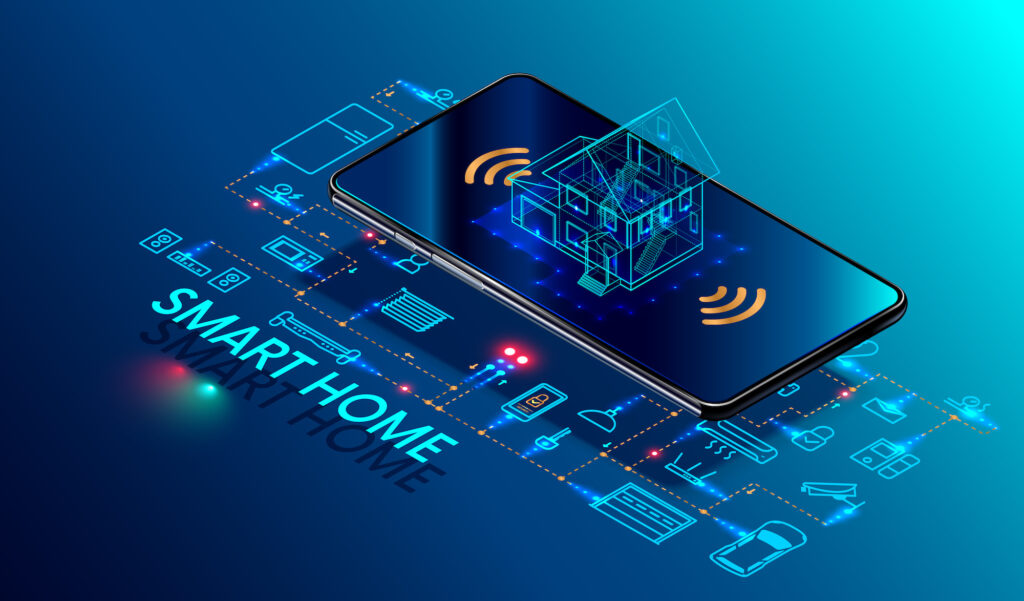The Internet of Things (IoT) has become integral to contemporary business. From online shopping to international travel, IoT has impacted a wide range of industries and everyday activities. But just what is IoT and what does it do?
KEY TAKEAWAYS
- IoT describes the network of physical objects equipped with sensors, software and other technologies.
- IoT works by creating a large network of all connected devices that respond to each other, allowing devices to perfect their utility based on their environment by collecting and sharing data.
- The Internet of Things boasts a wide range of benefits for businesses like efficiency and productivity.
ToolSense is trusted by 700+ companies



What Is IoT?
IoT refers to physical devices that are connected with one another online and that collect and share data. With small yet powerful computer chips, the number of IoT devices grows larger year-on-year. From smart home devices like microwaves to aeroplane systems, it’s possible to bring many products into the IoT ecosystem.
The IoT essentially works by crafting a large network of all connected items responding to one another. That way, devices can work by collecting and sharing data to perfect their utility based on their environment.
Common IoT appliances include auto-cooking ovens, self-driving cars and wearable fitness watches. All track data to improve the devices themselves or provide some additional benefit to the consumer. A fitness watch, for instance, tracks its user’s heart rate and exercise hours to tailor new and improved fitness routines.

A Brief History of the Internet of Things
The concept of an interconnected network of smart devices was first conceived as early as 1982. In experiments that were undertaken at Carnegie Mellon University, a Coca-Cola drinks vending machine was modified to connect to an ARPANET, a sort of proto internet. This ensured that drinks were stored at the desired temperature.
Many developments continued, but the phrase IoT itself can be traced to 1985. Here, Peter T. Lewis, a wireless technology developer, coined IoT as the integration of people and technology through interconnected devices that could be monitored and manipulated. In these early days, chips were just too large to integrate into effective everyday objects.
The definition of IoT has evolved as technologies and sensors develop. Today, the IoT is notable for its use of machine learning and automation in an internet world where more actual devices are connected to the internet than people. Processors have now become cheap and disposable enough to be connected with just about anything. Where the 1980s Coca-Cola temperature tracker was once too expensive, it’s now more cost-effective. In fact, it’s estimated that basic sensors sharing their data over the internet can cost as little as 10p per day.

How Does the Internet of Things Work?
Products are built with sensors that record and track data, syncing that data with similar information from other devices online. Depending on the product, data can be integrated and analysed across numerous devices to address needs and issues. IoT data platforms are able to identify the right information and discard the unnecessary to complete their tasks. Typical activities include detecting patterns of consumer use, recommending usage and pre-emptively identifying problems in devices.
For instance, a retail business can employ IoT to automatically track sales and recognize the most important items. Replacements can be re-supplied automatically based on such data. Likewise, cameras or other sensors can locate the areas of a showroom with the most traffic. By knowing how long customers remain in an area, you can identify choice products. Smart IoT devices do all this automatically, providing an efficient and automated response to improve business footfall.
Sensors in IoT: How Does It work?
On a practical level, sensors or system software observe and collect data from a device. This can be anything from heart rate monitoring and temperature readings to full video recordings.
Phones, for instance, have multiple sensors. Next, these sets of data are sent to a cloud via 5G, Wi-Fi and Bluetooth connectivity, among other methods. The connectivity is largely depending on availability and suitability. Once the data arrives in the cloud, it is processed by software platforms. This can be as simple as checking data against expected norms or as complex as facial recognition.
After data is processed, the information is implemented for its perceived end. In the case of a home-surveillance video with an unrecognized figure, you’ll receive instant notifications of intrusion and the authorities can be alerted. How IoT platforms utilize and implement data depends entirely on the use. It can be automatic, reviewed, or simply available for you to view on request.
Managing your assets shouldn’t be hard. That’s why Excel, WhatsApp or Pen & Paper are not the right tools to efficiently manage your asset operations. Implement our modern IoT sensors and manage your asset data centrally from one platform.
Examples of IoT
One of the more common examples of IoT is from the home. Smart homes and smart devices are among the most widely implemented IoT devices. We’re all familiar with smart speakers that take voice commands that can control light switches, televisions, and even kettles.
But there’s a wider implication for IoT in the home. Integrated smart systems can react based to changes in data. For instance, if your daily commuter train is cancelled or delayed, your IoT-tethered alarm clock can respond to wake you up in time for earlier travel. Presently, full IoT-enabled homes can have that cup of coffee and morning soundtrack ready for you when you wake.

IoT and Transport
Just as IoT works to improve your home and office life, it has great implications in transport. Smart IoT-enabled cars can communicate with manufacturers when cars run into issues. The manufacturer can then use this relevant information to offer scheduled appointments at associated garages and order required parts in time. This enables a smooth and more convenient process. Even simple issues like low windscreen washer fluid can be tracked for a refill. Then there are smart self-driving cars themselves, which rely on IoT ecosystems to navigate and discover faster routes.
What Is the Industrial IoT?
IIoT, or the Industrial Internet of Things, is the widespread application of IoT in a business and production setting. As with home applications, the use of sensors, wireless data transfer and analytics aims to enhance and improve industrial processes. In its most utopian vision, it applies not only to individual companies, but across the supply chain.
The impact would automate production and delivery to improve productivity and streamline businesses. Eventually, businesses would focus on more than just insular products and sell maintenance and replacement of that product as part of a system. Take, for instance, a car engine; IIoT would schedule repairs and maintenance directly when needed.
See How ISS Improved Their Asset Processes With ToolSense
Benefits of the Internet of Things for Business
IoT boasts a wide range of benefits for businesses. The main concerns apply to efficiency and productivity:
- Tasks that can be done automatically and in response to data analysis would see a reduction in human labour.
- Even simple office-related power uses can be automated by sensor monitoring to reduce energy consumption, keeping water and electricity bills at an absolute low.
- There are many other ways in which businesses would improve, from cost-effective operation to improved safety.
Why Do connected Devices Need to Share Data?
IoT devices need to collect and share data to improve automation and provide adequate responses. Each device itself collects data to fulfil a specific task that is useful to the consumer and manufacturer. These differ depending on the object’s use but can include general system checks to ensure safety and increase productivity. Sensors in structural architectural materials, for instance, would note abnormalities to prevent future damage. Of course, with the widespread collection of data, security, and privacy issues also arise.
Security Risks of IoT Devices
Security is one of the most talked-about issues with IoT. As devices collect and collate sensitive data — including voice activation commands and GPS movements — there are concerns about where and how data is kept. Trust is required if IoT is to become more widespread.
Unfortunately, companies need to do more to encrypt and secure data when it’s stored or being transferred. Flaws in code and vulnerability to hackers is very real. Governments like the UK have responded by publishing their own guidelines on IoT devices, including unique passwords for each device.
Risks include everything from hacking and tracking of at-home smart devices to serious industrial practices. Industrial and scientific espionage on critical transport infrastructure or assembly-line machinery are potential issues to rectify. Businesses, universities, and government offices need to ensure that their networks are protected with thorough data encryption and that sensors are secure. Hacking and manipulating sensors, like a nuclear power station’s temperature gage, can have catastrophic real-world implications.
Privacy Implications
Just as security is an issue with anything connected to the internet, so is privacy. Data on the internet is susceptible to hacking with few exceptions. Personal data and surveillance are particular issues most consumers are concerned about. There have been several real-life issues of this sort.
In 2015, the digital toymaker VTech exposed data, including pictures and videos, of some 6.4 million children in an online breach. As another example, seemingly innocuous data on smart fridge stock could be used to help consumers fill their fridges, but it could also be used by firms to exploit a consumer’s lack of food. Targeted advertising is one such example of private data being utilized in questionable ways.
Where Does the IoT Go Next?
IoT is still in its infancy. While smart devices are becoming more prevalent in the home, products aren’t always completely in-sync with one another. Smart light bulbs are separate from smart speakers, and so on. Tech firms will continue developing new products that are designed to make life more synchronised and convenient.
Still, the next big steps will be in integrating and securing connections across the household and in the office. IoT will impact just about anything where it is affordable to do so, simplifying everyday issues like car parking and tracking entertainment recommendations. Regarding trends and developments, we don’t quite know yet exactly where we’ll be in the future, but the home will get smarter.
How ToolSense IoT Hardware Improves Your Asset Management
Conclusion
An IoT system is an interconnection of multiple devices through an IoT cloud or online network. Data collected through sensors and IoT software are then analysed to perform an appropriate action. This can be anything from alerting users to an issue to remotely performing an automated task.
The end goal of such a smart system is to integrate time and cost-saving measures for a more successful business and convenient lifestyle. As such, IoT is widely regarded as one of the most promising digital technological advancements. While we are still in the early stages of developing safe and secure environments, IoT is even now offering impressive benefits to businesses and households in its infancy.
FAQ
This is the process through which devices are configured and maintained as part of a system. It ensures the health and connectivity of all devices, making sure your system is up-to-date and fulfilling its tasks.
IoT refers to physical devices that are connected online and collect and exchange data. They work with small but powerful computer chips. Example range from smart household appliances such as microwaves to aircraft systems.
Auto-cooking ovens, self-driving cars, wearable fitness watches and smart homes.
IoT products are equipped with sensors that record and track data and synchronize that data with similar information from other devices online. Depending on the product, the data can be integrated and analyzed across numerous devices to solve needs and problems.

